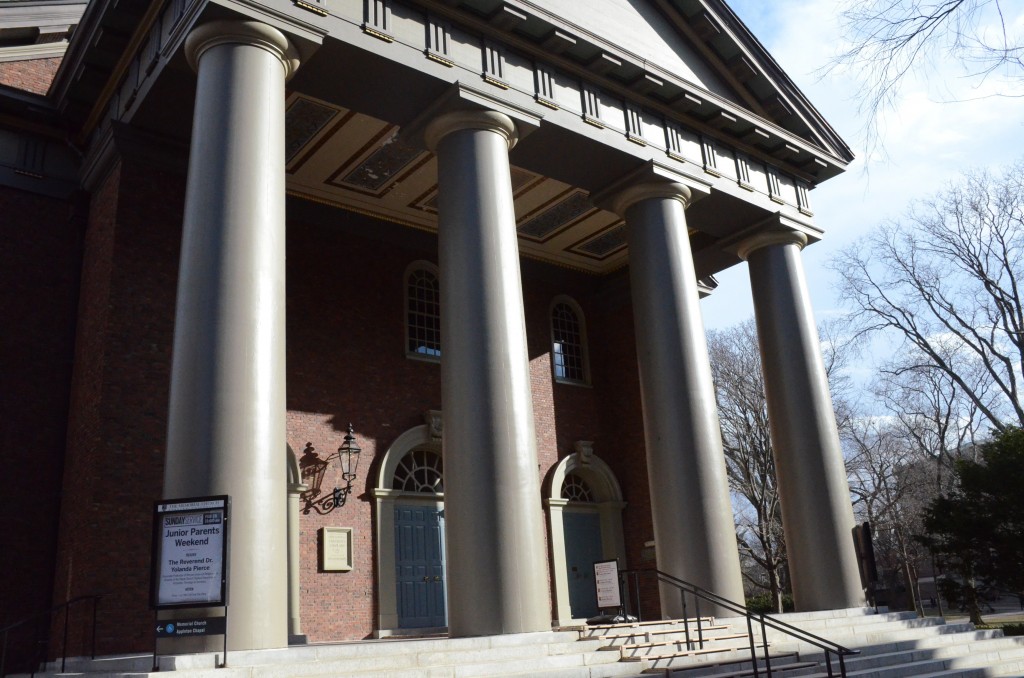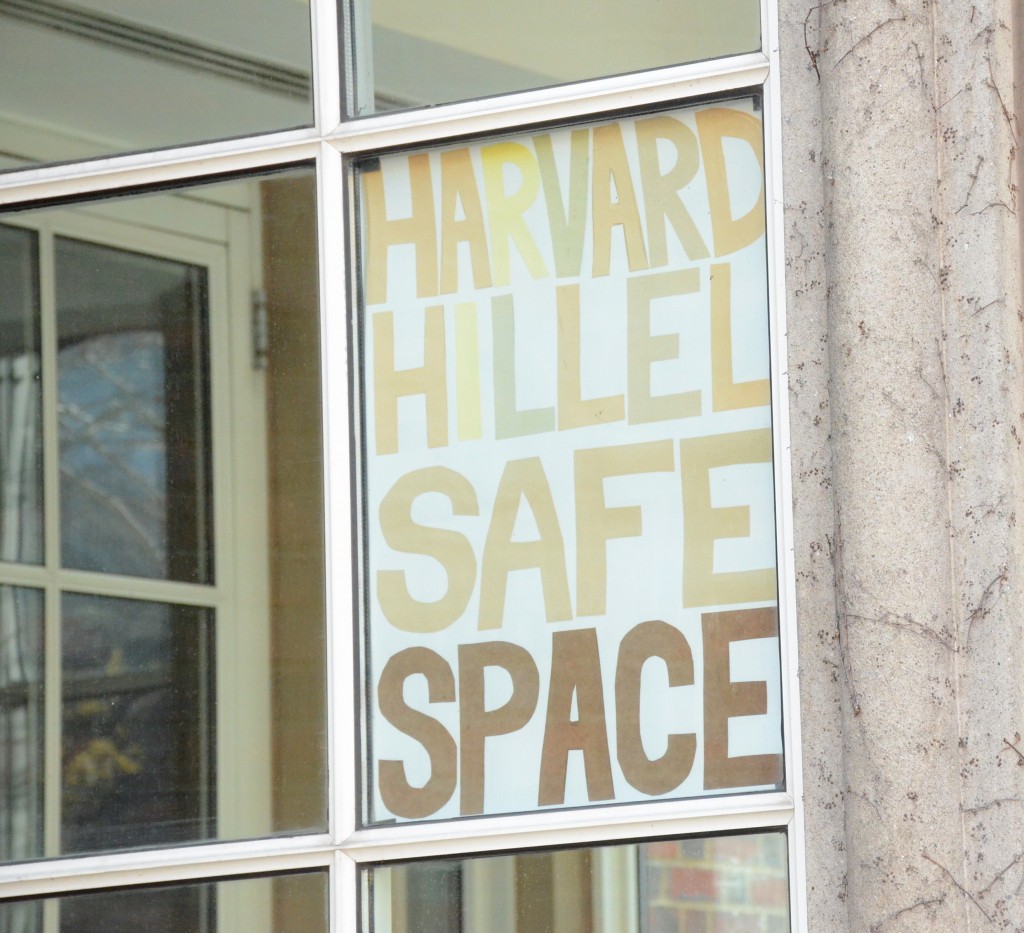In our enlightened and postmodern culture, pollsters talk often about the rise of the “nones,” a category of people who profess no religious affiliation. They cite the decline of the church in Europe and the similar trajectory of mainline Protestantism in the United States as the natural result of scientific advancement, education, and a more diverse and understanding society. One might expect the pinnacle of this trajectory to be at Harvard, a liberal arts institution perched above the petty, tribal instincts of religion. Yet the reality remains that there are many students on campus who still practice a variety of faiths. According to the Harvard Crimson, the majority of Harvard’s class of 2019 identifies with a particular religion, and approximately 35 percent of both the class of 2019 and the alumni class of 2015 identified as Protestant or Catholic.
Harvard offers financial support to officially recognized student organizations of a religious nature and hosts many Chaplains of different religious backgrounds, yet the language of the Harvard student handbook religion section paints a different picture. The first sentence affirms that the college upholds religious freedom, but the rest of the section outlines prohibitions and warns of the dangers of “religious recruitment through high-pressure tactics,” revealing a nervous, almost skittish attitude toward religious students and institutions.
While there is no clear institutional hostility toward religious practice, there are clear gaps in understanding how to address religious diversity at Harvard. Administrators and students alike must engage with these issues that are so pertinent for many students on campus. If Harvard is really willing to stand up for its goal to achieve intellectual, personal, and social transformation for its students, it cannot afford to overlook religion.
Eating, drinking, and sex (or maybe not)
One of the clearest ways that religious students often differ from their peers is in their lifestyles. Anam Javed ‘18 is a Muslim from Pakistan who described to the HPR religion as “intertwined with culture.” She notes that Islam prohibits drinking, and given that drinking can play a large role in the college experience, she realizes how different her time at Harvard is from other students’. There is an even more noticeable difficulty with making choices like whether or not to eat Halal. So far from home, these daily decisions must be deliberate. While Isaac Inkeles ’16, who is Jewish, admitted to the HPR that although he may not always eat Kosher, he still makes an effort to go to the Harvard Chabad, which offers religious services and Kosher food for interested Jewish students at Harvard.
Students with dietary restrictions are not the only ones that regularly make unfamiliar decisions to their peers. Kate Massinger ’16 is the co-president of HCFA, the largest Christian student group on campus. In an interview with the HPR, she recalled a peculiar question from some friends. “What is it like not to have sex when dating someone you love? How do you do that?” She was amazed by their fascination at things that some religious people take for granted, such as living by an often counter-cultural sexual ethic. Massinger also added things like tithing—giving 10 percent of income to the church—and praying to the list. In Massinger’s experience non-religious people are fascinated by these practices and often unaware of the value judgments and decisions religious students are making on a daily basis.
A recent movie popular in some Christian circles titled “God’s Not Dead” depicts the stereotypical, atheistic, philosophy professor forcing his students to write down “God is dead” as their first in-class assignment. While this may seem extreme, there are a variety of experiences for religious students when it comes to their faith being challenged in the classroom.
Javed, who is a sociology concentrator, described a class that was not religious, though one of its readings was about the Quran. She said it “felt weird to suddenly be surrounded by people who probably didn’t know anything about Islam,” and furthermore, did not know the correct terminology to discuss it. Students were offering value judgments of the text, though many did not have the background to understand it. They seemed unaware of different perspectives and ignorant of the substance they were discussing.
However, for Inkeles, religion and classwork never seemed to clash. He noted that “the answer is different for a lot of people, but I haven’t ever felt like my faith was directly challenged in class.”
Still, in one of Massinger’s classes, she saw a major disconnect when it came to discussion about religion. She was in an education class where they had talked about issues in public schools regarding race, gender, and class. She felt that these topics were treated with sensitivity, but when the discussion arrived at religion, the professor opened the conversation “by laughing about Satan” and noting how silly it was to teach “literacy through the Bible.” They had been given a set of readings “obviously set up to have us pick a good guy and a bad guy,” in which a paper that had voiced strong opposition to all things religious was considered the “good guy.” The “bad guy” was a piece arguing religious students should have the option to opt out of parts of their education that were in opposition to their religious beliefs. From the start, the class was geared toward arguing against the bad guy, which Massinger found frustrating because previous classes had been so focused on inclusion. She remembered raising her hand and voicing “we were joking ourselves if we thought that we were giving equal weight to the concerns of religious students.” Massinger argued that their treatment of this viewpoint was a far cry from the respect that other topics discussed in class had received.
Harvard as an institution faces great challenges addressing the needs of religious individuals and groups on campus. Dan Cho ’96 is the Chaplain for Asian Baptist Student Koinonia. He told the HPR that “Harvard has been reasonably supportive of providing religious opportunities for students on campus,” but that is different than the reality of a more closed intellectual diversity. He still sees problems with religious representation in terms of faculty and ideas.
Inkeles finds it telling that there is an Office of Diversity and Inclusion for racial, gender, and sexual diversity, “but there’s no sort of analog for religious diversity.” He feels that the College’s choice of limited offerings indicates that discussion about religious beliefs and backgrounds is not considered worthwhile or significant. Inkeles also pointed to the Community Conversations program in which all freshmen entering Harvard are required to take part. While he believes that the program can be informative for how students see themselves and understand the community, he notes that none of the discussion “was about people with different religious perspectives.” This reality seems remarkably rich at a university setting that prides itself on so-called inclusive discussions. Still, Massinger suggests the problem is not due to a lack of pursuing religious diversity, but rather not understanding how to engage with different religions. She adds that “it’s not about always being coddled,” but about getting “a fair hearing.”
Inkeles believes that a fair hearing of different religious perspectives does not always happen among his peers because other students often “take for granted that religious beliefs are irrational.” When having intellectual conversations, there is an assumption that religious beliefs are held despite certain unpopular “religious tenets or principles,” that these beliefs have not been approached with intellectual rigor. Inkeles has never experienced malicious intent in these conversations, but there remains “this idea that [religious beliefs are] counter to rational thought.”
For Cho, the issue is one of “thin pluralism vs. thick pluralism,” a concept he learned from philosopher Nicholas Wolterstorff. True pluralism, or “thick” pluralism, acknowledges the deep conflicts in the understanding of common issues and recognizes the dramatic consequences of these disagreements. Even so, individuals can still respect one another and engage in a robust dialogue. It is important to cherish the value of human counterparts in these discussions and realize that these are conversations worth having. In having a necessary “discussion and university-wide conversation,” it is unproductive to have the “safety of a very thin, plastic kind of conversation,” where there is no free expression and those involved feel a need to simply agree to disagree in order to get along.
While remarkably different in beliefs, a commonality among those interviewed was the strong conviction that faith enhanced the Harvard and human experiences. As her religious decisions become more conscious, Javed feels that she is learning more about herself, and that has shaped the way she approaches opportunities at Harvard. Massinger believes religion offers a different lens to view struggles with stress, anxiety, and worthlessness that students experience on campus. It is “not that [Christians] don’t struggle, but how we struggle differently and how we operate differently [that] is really important.”
Cho puts this dichotomy in more direct terms. “If we really want to experience life to the fullest, there’s a spiritual part to that. The absence of that is to experience life and humanity in only a partial way.”
As Massinger said, it is not about coddling or not offending. The issue for Harvard lies in providing an environment for an open discussion about real differences. It is important to recognize and address religious individuals with the same intellectual rigor and refuse to brush aside their worldview as irrational. While it is clear that Harvard can do better dealing with the concerns of religious individuals, there seems to be much more positive sentiment than animosity about practicing religion at school.
(All images credit Peter Wright/HPR.)



